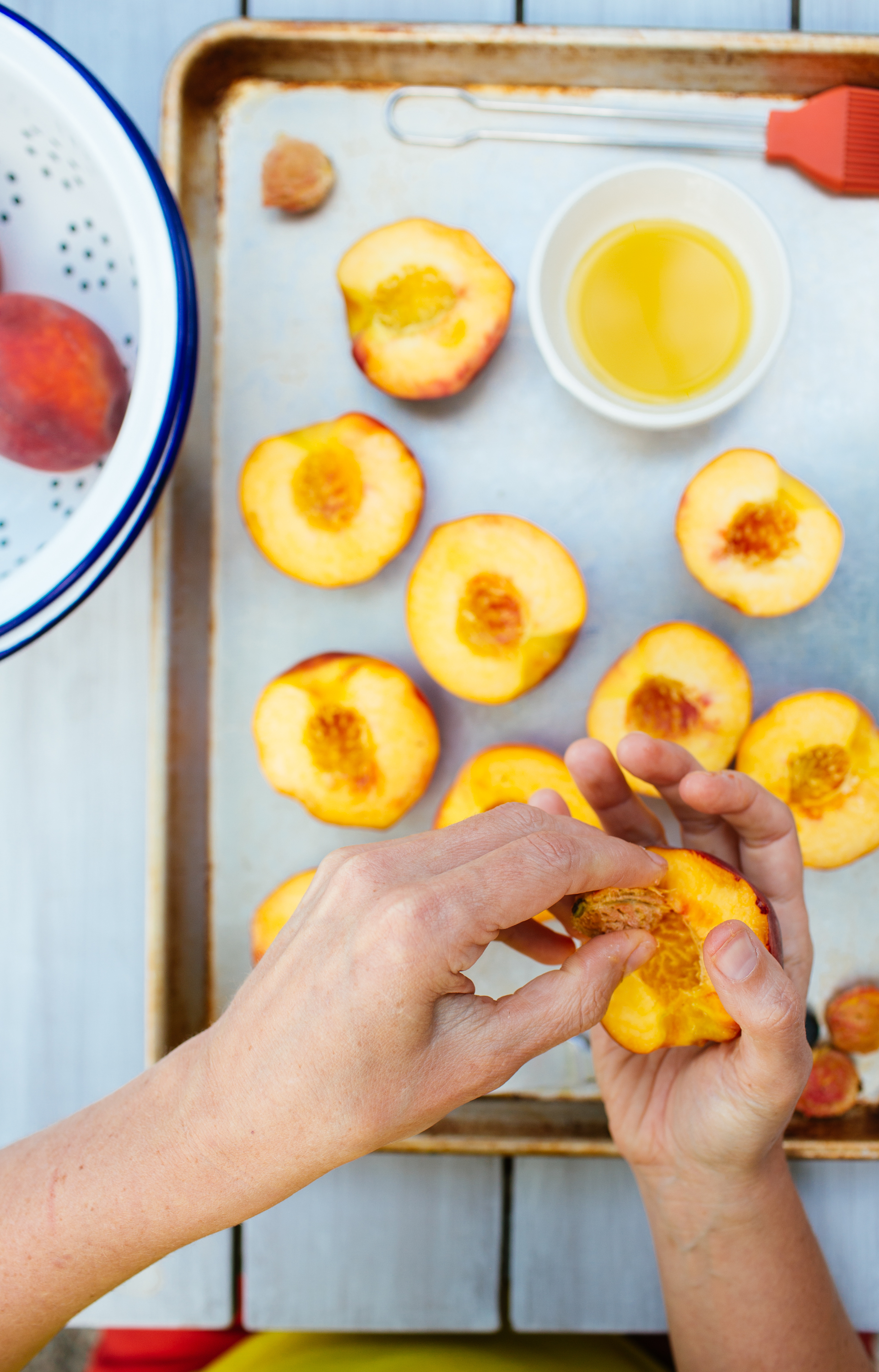
The first peaches of the season are Clingstone peaches meaning the flesh of the fruit clings fully to the pit. Its an all-around great peach for virtually any purpose.

Cling stone versus freestone - the great peach debate.
Cling or freestone peaches. What Are Freestone Peaches. Freestone or cling-free peaches refer to fruit where the flesh is not attached to the pit. When you cut or bite into these peaches you can reach in and remove the pit easily making them a pleasure both to eat out of hand and for cooking baking and.
As the names subtly imply the difference between freestone peaches and clingstone peaches is how much the fruits flesh clings to the pit. Freestone peaches have fruit that easily pulls away from the pit while clingstone peach flesh stubbornly clings to the pit. Ghazalle Badiozamani More About Freestone Peaches.
Basically the categorization comes whether the fruit clings to the pit or doesnt. A clingstone peach has fruit that does not fall off the pit. These peaches are fantastic for eating but arent the best for canning and freezing.
These varieties are available Mid-May to Early June. Clingstone peaches are peaches where the peach does not come away easily from the pit of the peach. These kinds of peaches are fine for eating or for making pies or other desserts but if you are looking for peaches to can you will have to cut them into slices.
Clingstone peaches are generally smaller and sweeter than freestone peaches. When canning peaches should you choose clingstone or freestone. Well it depends on what you are going to use it for later.
Some people like peaches to use. With freestone peaches when sliced the fruit easily separates from the pit or the stone. Cling sometimes called clingstone can be sliced around the pit but when you try to gently twist the.
Freestone or Clingstone Peach - YouTube. Did you know that different varieties of peaches are categorized as either Freestone or Clingstone. Stone or Pits in Peach Peach Stone Types Freestone.
Peaches in the freestone category have flesh that easily comes away from the stone. The different kinds of. As their name suggests clingstone peaches have flesh that hugs.
Cling stone versus freestone - the great peach debate. In my experience working in produce I can tell you that most people clamor for the freestone peach. They are just easier to slice up as you can pop the pit right out.
That is especially desired when someone is making a pie or jam and has to cut up a lot of peaches. Freestone peaches are sweet and juicy and can sometimes be slightly larger than clingstone and are wonderful eaten out of hand or used for cooking baking canning and freezing On the other side clingstone are typically a bit smaller. The later peaches which are used for canning are freestones.
Cheese1227 August 18 2010 From my friend who grows peaches for a living. Unless you know the variety you cannot just look at a peach and tell for sure if it is freestone. Almost all fresh peaches sold are freestone.
They are generally softer and juicier and because the pits pull away from the flesh so easily they can be cut nicely into uniform pieces for tarts or. A cling peach will stick to the pit and a freestone is not so securely attached particularly when they are fully ripe. Click to see full answer.
Subsequently one may also ask are Colorado peaches Freestone. Colorado peaches are especially sweet and juicy. Plus they are always freestone meaning the pits separate easily from the fruit.
Peaches can be freestone or clingstone fruit. Cling peaches are peaches with stones which tend to cling to the flesh inside of the peach making it difficult to remove the pit of the peach without damaging the flesh. Some examples of clingstone cultivars include.
Bowen Klampt Everts Starn Loadel Ross Sullivan Carson and Halford. Semi-Freestone Peaches The semi-free also known as semi-clingstone or semi-cling is a hybrid that gives you the best of both peach worlds. This variety is nearly as juicy and sweet as clingstones with flesh thats much easier to remove from the pit.
Its an all-around great peach for virtually any purpose. Many nectarines are semi-free peaches. Clingstones are best peeled and served whole or sliced.
Freestone peaches relinquish their pits easily making it a cinch to cut the peach down the middle along its distinctive seamline and then twist its halves gently in opposite directions to separate. Freestone peaches are typically larger than clingstone wonderful eaten out of hand or used in cooking baking canning and freezing. Freestone peaches are generally harvested mid-season and once they arrive these freestone peaches will be available throughout the peach season.
Semi-Cling is a hybrid type peach that is less well known than its. Freestone peaches are typically picked in late June. The first peaches of the season are Clingstone peaches meaning the flesh of the fruit clings fully to the pit.
In early June we transition to Semi-Clings peaches meaning the flesh of the peach comes mostly off the pit.